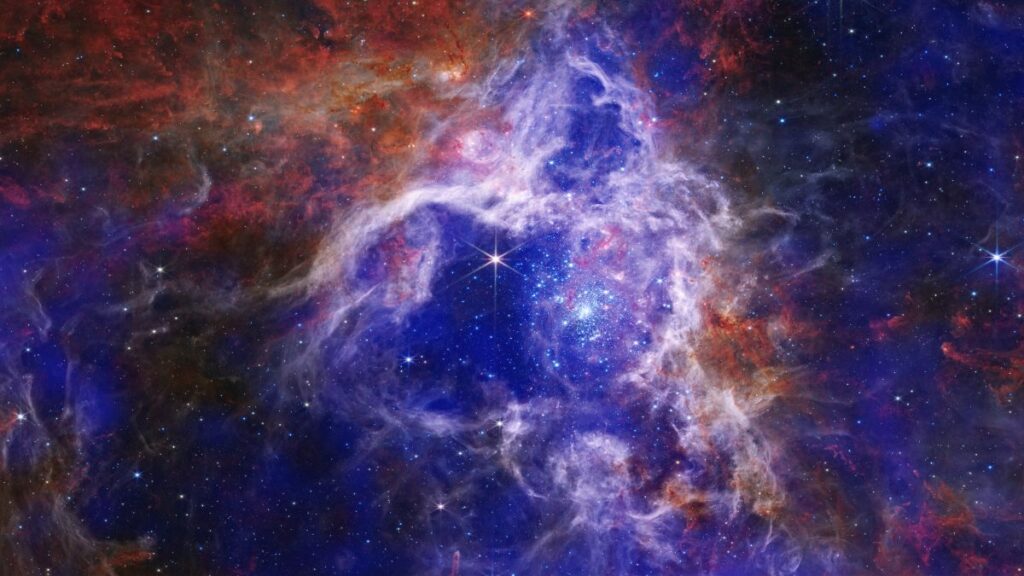
For the first time, astronomers have identified life’s essential building blocks frozen in ice beyond the Milky Way galaxy. A team of researchers, led by astrophysicist Marta Sewiło from NASA’s Goddard Space Flight Center and the University of Maryland, discovered complex organic molecules in the icy material surrounding a young star known as ST6 in the Large Magellanic Cloud. Among the compounds detected were ethanol, acetaldehyde, and methyl formate, which had never before been observed in ice form outside our galaxy.
The findings, published in The Astrophysical Journal Letters, indicate that the ingredients for the chemistry necessary for life may be widespread throughout the universe. In addition, the research confirms the presence of acetic acid in ice, a compound that had only been previously detected in vapor form in space. This discovery enhances our understanding of how complex chemistry arises in the universe and opens up new avenues for exploring the origins of life.
Significance of Organic Molecules in Space
Complex organic molecules (COMs) consist of at least six atoms, with carbon being a fundamental element. These molecules, including ethanol (CH3CH2OH), methyl formate (HCOOCH3), and acetaldehyde (CH3CHO), are crucial for scientists studying the origins of life. They are precursors to amino acids, sugars, and nucleobases, which are essential components for life as we know it. Finding these compounds in space helps illuminate the pathways that may have led to prebiotic chemistry on Earth.
The Large Magellanic Cloud presents a unique environment for these studies. It has a lower abundance of heavy metals—elements heavier than helium—compared to the Milky Way. This means that the LMC has fewer elements like oxygen, carbon, and silicon, and it experiences intense star formation, which can create different conditions for molecule formation. Understanding how COMs form in such an environment remains a key question for researchers.
ST6, the young star around which this discovery was made, is located approximately 160,000 light-years from Earth within a region known as N158, not far from the renowned Tarantula Nebula. The team utilized the James Webb Space Telescope (JWST) to analyze mid-infrared light emitted from the icy material surrounding ST6. By comparing the light spectra to a database known as the “COM fingerprint,” they were able to identify the molecules present.
Future Research and Implications
The identification of methanol, acetaldehyde, ethanol, methyl formate, and acetic acid in the icy dust surrounding ST6 supports the idea that these compounds emerge through grain-surface chemistry. This process occurs when ice forms on dust grains in space, creating a thin coating that can facilitate chemical reactions leading to the formation of COMs. The presence of these molecules in such a distant, metal-poor environment suggests that the chemistry of life could be more common across the universe than previously thought.
Sewiło emphasized the need for further research, stating, “We currently only have one source in the Large Magellanic Cloud and only four sources with detection of these complex organic molecules in ices in the Milky Way. We need larger samples from both to confirm our initial results that indicate differences in COM abundances between these two galaxies.” The team plans to expand their investigations to additional young stars in the LMC to ascertain whether similar chemistry occurs throughout the dwarf galaxy or if ST6 is an anomaly.
This groundbreaking discovery moves us closer to understanding the conditions that may have led to the emergence of life beyond Earth, suggesting that the building blocks of life are not confined to our galaxy but are part of a broader cosmic landscape.






